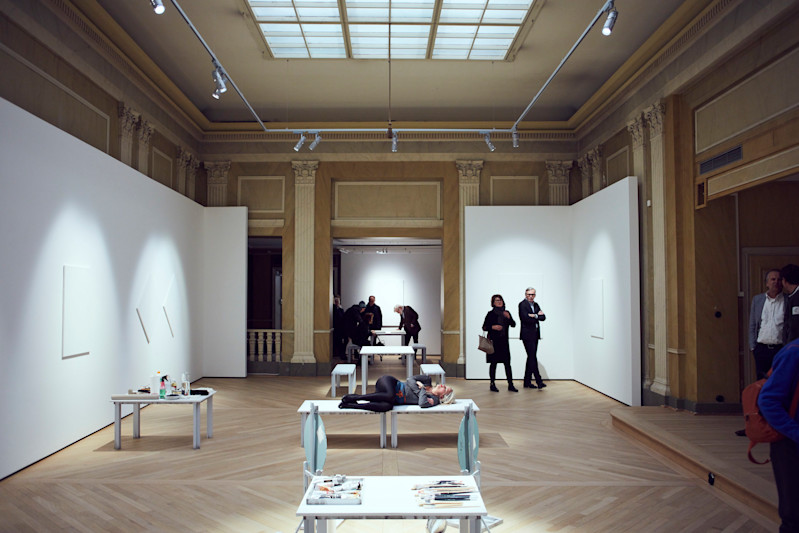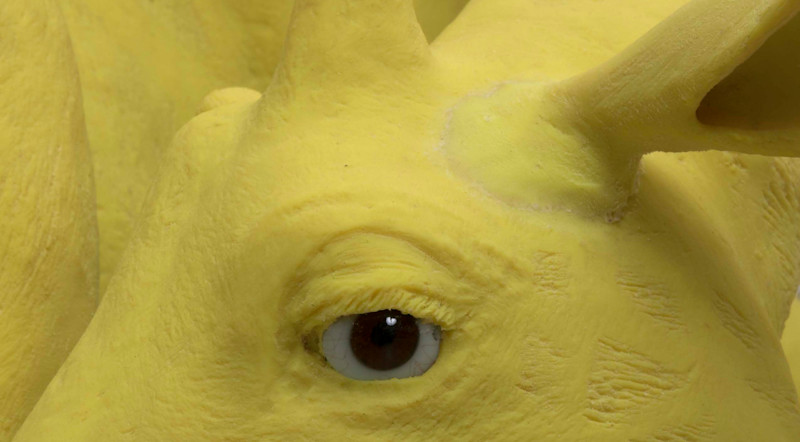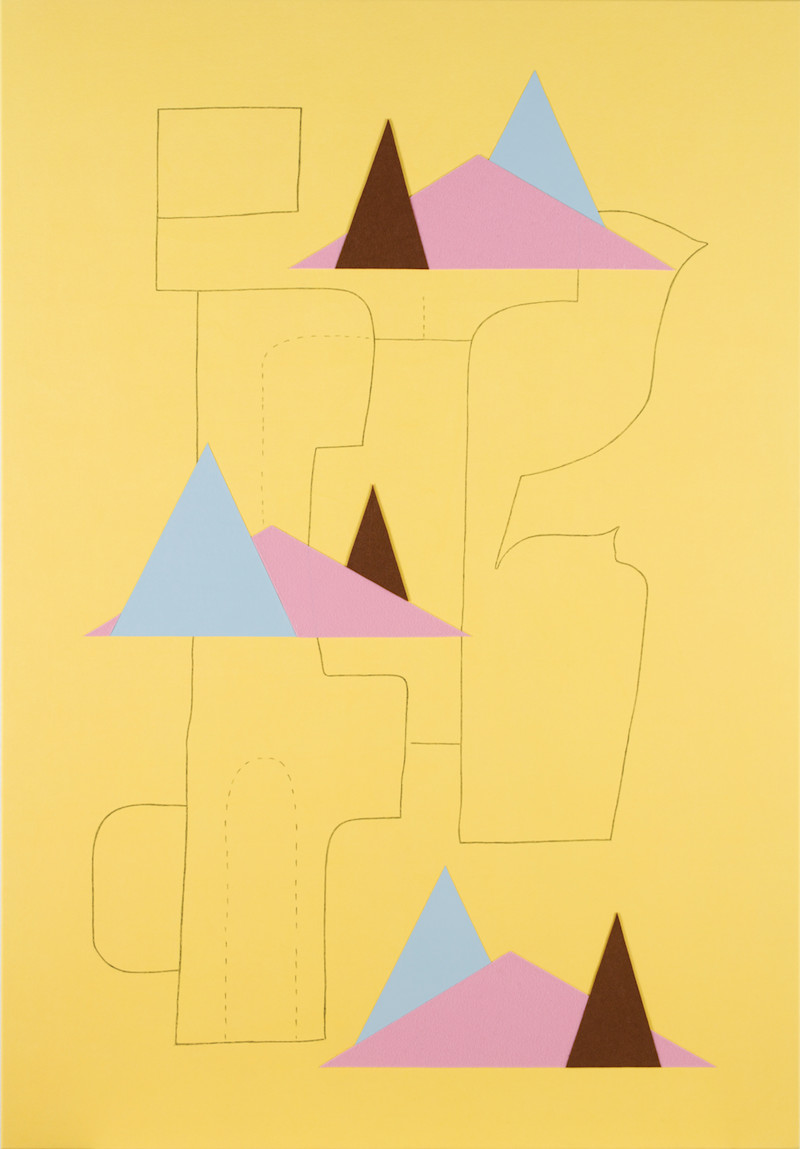Christine Ödlund, The Garden of Frequencies
Essay
February 29, 2020
- Carl Michael von Hausswolff

The Garden of Frequencies — Synaptic Transmission Liberation
In 1954, Aldous Huxley famously expressed that the prime function of the human brain is to protect: “to make biological survival possible, Mind At Large has to be funnelled through the reducing valve of the brain and nervous system. What comes out at the other end is a measly trickle of the kind of consciousness which will help us to stay alive on the surface of this particular planet.” This statement includes the filtering of frequencies; selecting and dismissing. Without this equalised cleansing, we would go insane from all the audible noise that would constantly be addressing and attacking us.
Certain individuals and cultures are and have been able to partly eliminating this filtering to allow themselves to sonically take in more of our created macro- and microcosms. One of those labelled the originator of communication and music, Hermes Trismesgistus, expresses to the divine healer Asclepius that “air enters into earth and water; and fire enters into air. That only which tends upward is life-giving; and that which tends downward is subservient to it. Moreover, all that descends from on high is generative; and that which issues upward from below is nutritive.” So, it was only natural that Pythagoras would promote music as a core aspect of his teachings. He could perceive “The Music of the Spheres” — the combinations of frequencies approaching us from the outer worlds, generated by the rotations of seven planets, with the interacting frequencies produced by the sun, other stars, galaxies, and the entire universe spicing things up. The energy carried by the frequencies was not simply the audible chord, but also the experienced sub- and supra-frequencies.
And if, in the Chinese system, the twelve Cosmic Tones were regarded as the actual Universe, these tones were developed from a Primal Sound that is present everywhere; a complex yet pure, low-frequency bass sound produced by the rotation of one planet, and the emissions of myriad energies from a multitude of matter, animals and plants – the frequency of planet Earth. Yin and Yang. Dark and light.
“As above, so below,” as the alchemists love to say.
Oscillating back and forth between macro and micro, the Hindus use the mantra Aum as their Nada Brahma (“Sound God”), or sonic vehicle for travelling from the outer to the inner and vice versa, and the Sufi teacher Hazrat Inayat Khan wrote in 1923: “Before its incarnation the soul is sound. It is for this reason that we love sound.” Let’s listen to Hermes again: “And there is yet another kind of living beings […] not without sensation, so that they are gladdened by all that does them good, and suffer pain from all that impairs and harms them. This kind consists of all things which are implanted in the soil, and spring into life with firm-fixed roots; and the individuals of this kind are spread abroad over all the earth.” The nutritious energies stemming from beneath.
Recently, I read an article in New Scientist: A research team “found that tomato and tobacco plants made sounds — at frequencies humans cannot hear — when stressed by a lack of water or when their stem is cut. Microphones placed 10 centimetres from the plants picked up sounds in the ultrasonic range of 20 to 100 kilohertz, which the team says insects and some mammals would be capable of hearing and responding to from as far as 5 metres away. A moth may decide against laying eggs on a plant that sounds water-stressed, the researchers suggest. Plants could even hear that other plants are short of water and react accordingly, they speculate.” So, not only may we, as we have done, translate the effects that the energy supplied by fungi such as Amanita Muscaria or Claviceps Purpurea has on us humans, through frequency interferences caused in the mental regions of our bodies; we may also be able to understand the calls from these fungal and plant kingdoms if our perceptive ambitions allow this – and perhaps they can aid us in our troubles.
Artists like Christine Ödlund, Chris Watson, Superflex, and Jana Winderen understand this. In 1980, Václav Hálek heard a mushroom sing. Since then, the 70-year-old Czech composer has been obsessively listening to them, transcribing their music into scores for symphonic orchestras.
Natural history writer and biology professor David George Haskell claims that he can distinguish different trees by their sounds, and if we’re able to listen, we’ll also realise that nature listens, and that just as insects and plants listen on land, fish and corals also listen and act under water as Trevor Nace reports in Forbes: “As coral reefs die they become silent graveyards, however, the introduction of underwater loudspeakers brings new life and helps to rejuvenate the coral reefs. […] The researchers believed they could potentially entice juvenile and adult fish to a dying reef by playing sounds associated with a vibrant living reef. The results proved their hypothesis, broadcasting healthy reef sounds doubled the total number of fish and increased the number of fish species by 50% compared to equivalent unmodified dead coral.”
We don’t have to imagine ourselves turning into Franz Kafka’s beetle or Renate Rasp’s tree to be able to communicate and collaborate with a nature that we don’t understand. As we dwell in our garden of frequencies, we will encounter not merely fungi, but also fruits and herbs, and just as we’re accustomed to letting drone music by La Monte Young, Éliane Radigue, Christine Ödlund, Phill Niblock, and Stephen O’Malley talk to us and lead us in a certain direction in life, we might also encounter the powers of Atropa belladonna, Datura stramonium, and Mandragora officinarum and let them sweep us away on a ride on a witch’s broom, an insane rolling and turning of stones, or respite from melancholia. We can listen to the old oaks in Östergötland or the Tree of Hippocrates at Kos, and hear the weeping trees burn in the rainforests of the Amazon, Borneo, or the Congo!
All we need to do is open up our brains a bit and let the information flow. We call it Synaptic Transmission Liberation. The communication is there!
The quintessential energy that we call life – “spirit” in the old religious vocabulary – is basically a vast range of frequencies that have been omnipotently arranged into an infinite complexity of systems of combined vibrations. Ranging from the highest-frequency ultrasonic sound waves (sounds which lie above the 20,000 Hz that are audible to human beings) down to the lowest infrasonic sounds (sounds below the audible frequency of 20 Hz) we would be able to “know” about anything that exists if we only had the willpower, the knowledge, and the right technique. Everything moves! Emanuel Swedenborg already knew this when he wrote: “the solid and hard natures, like wood, stone, and metal, are subject to quivering” in 1718.
Nowadays, we are constantly engaging with megahertz (1,000,000 Hz), gigahertz (1,000,000,000 Hz) and terahertz (1,000,000,000,000 Hz) frequencies, and if we want to study the frequency activity in solid matter, we can use emission spectroscopy to carry out an analysis, and then transform the frequency combinations into an audible spectrum. This technique was pioneered by sound artist leif e. boman in 2000–2003, and I have used it a few times composing music from soil and ash in Colombia, Uruguay, and Poland. The fact that living activity has been found in such analysis and results is stunning. We’re on the verge of using this technology to enter into collaboration with semi-living viruses and other phenomena such as Electronic Voice Phenomena.
Experimental investigations into the relationships between quantities of vibration and sensation are sometimes labelled “psychophysics”. Here, audible and inaudible sounds, such as colours and heat, are explained as different periodicities or frequencies on a continuum, rather than as distinct qualities. This is where Christine Ödlund’s art operates, and the reason why we realise that the colours she uses are organic pigments that speak to us – soul to soul.
It’s time we dismantled the general hierarchical system, and let the ups and downs arrive at a new systematic equalisation.



